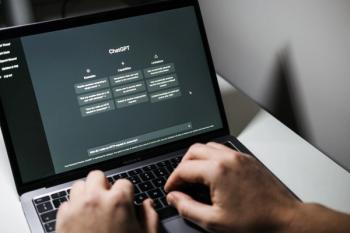
Sharp Pandemic-Related Decline in HIV Care Utilization Found in India
A significant decline in HIV-related service utilization was observed among at-risk populations in India during the COVID-19 pandemic.
A significant decline in
With more than 550 million confirmed COVID-19 cases worldwide, concerns have been raised regarding the impact of the pandemic and its associated lockdowns on access to preventive and treatment services for infectious diseases. Specific to the HIV epidemic, researchers cautioned that impacts are likely most profound among key populations in resource-limited settings.
“Key populations, such as people who inject drugs (PWID) and men who have sex with men (MSM), are particularly vulnerable given underlying individual and structural barriers to engaging in HIV treatment and preventive services,” they said.
In India, which has experienced the second highest number of COVID-19 cases worldwide after the United States, MSM and PWID populations were noted by researchers to face economic and social barriers that could have been exacerbated by the pandemic.
With little to no research available regarding the impact of the pandemic on HIV-related service provision outside government facilities, they assessed utilization patterns at MSM- and PWID-focused, community-based integrated care centers (ICCs) for an 18-month period covering 2 months preceding the pandemic (January-February 2020) and over the first and second COVID-19 waves in India (March 2020-June 2021).
Primary outcomes examined included unique clients accessing any ICC service, ICC services provided, unique clients tested for HIV, and HIV diagnoses and test positivity.
“Beginning in 2013, we established ICCs which provide HIV preventive and treatment services to MSM and PWID across 15 Indian sites…Among an established cohort of PWID/MSM living with HIV (PLHIV), we administered a survey on the pandemic’s impact on HIV care and treatment (June–August 2020),” the authors wrote.
Across the entire time period (January 2020 to June 2021), 13,854 unique clients visited an ICC. The average monthly number of unique ICC clients in January/February 2020 (prepandemic) was 3761 (MSM, n = 1456; PWID, n = 2305).
Compared with prepandemic levels, the overall number of clients receiving any type of service at the ICCs began a sharp decline in mid-March 2020 and dropped to 25% of prepandemic levels in April/May 2020 (first wave).
Utilization then exhibited a slow but steady rebound to 87% of prepandemic levels in March 2021 until the beginning of the second wave in April/May 2021, as utilization dropped to 57% of prepandemic levels in May 2021, followed by a rebound in June 2021.
“The second pandemic wave in May 2021 was associated with a larger drop in utilization among MSM than PWID (28% vs 76% of prepandemic levels). Declines in both waves were statistically significant for MSM and PWID,” noted researchers.
HIV testing followed a similar trajectory, in which the average monthly number of unique clients who received HIV testing dropped to 13% of prepandemic levels during the first wave, rebounded to 84% of prepandemic levels until the second wave, and fell again to 32% of prepandemic levels overall in May 2021 (16% and 51% for MSM and PWID, respectively). Declines in testing rates during the 2 waves were statistically significant for MSM and PWID.
HIV test positivity changed over time, declining in the first wave and reaching its nadir around July 2020 at approximately 50% of prepandemic levels. Positivity then increased steadily, eventually becoming higher than in prepandemic periods by October/November 2020 for MSM and by March 2021 for PWID. The second wave was associated with a decline in positivity for MSM, from 9% in April 2021 to 5% in May 2021, but the positivity rate was relatively unchanged for PWID (12% in April and May 2021).
Among the 1650 people living with HIV surveyed, 52% of PWID and 45% of MSM reported that the pandemic impacted their ability to see an HIV provider. Barriers to accessing sexually transmitted infection (STI) testing and partner HIV testing were found among MSM. Overall, 60% of MSM populations who needed an STI test could not get one and 47% of MSM who needed HIV testing for partners could not access it. Fewer PWID reported an inability to access key services like needle/syringe services (12%) and medication for opioid use disorder (8%).
“Of particular concern is the increase in new diagnoses during the second wave of the pandemic, which could signal increased HIV transmission and patients presenting with advanced disease among vulnerable groups,” concluded the study authors.
Reference
McFall AM, Menezes NP, Srikrishnan AK, et al. Impact of the COVID-19 pandemic on HIV prevention and care services among key populations across 15 cities in India: a longitudinal assessment of clinic-based data. J Int AIDS Soc. 2022;25(7):e25960. doi:10.1002/jia2.25960
Newsletter
Stay ahead of policy, cost, and value—subscribe to AJMC for expert insights at the intersection of clinical care and health economics.















































